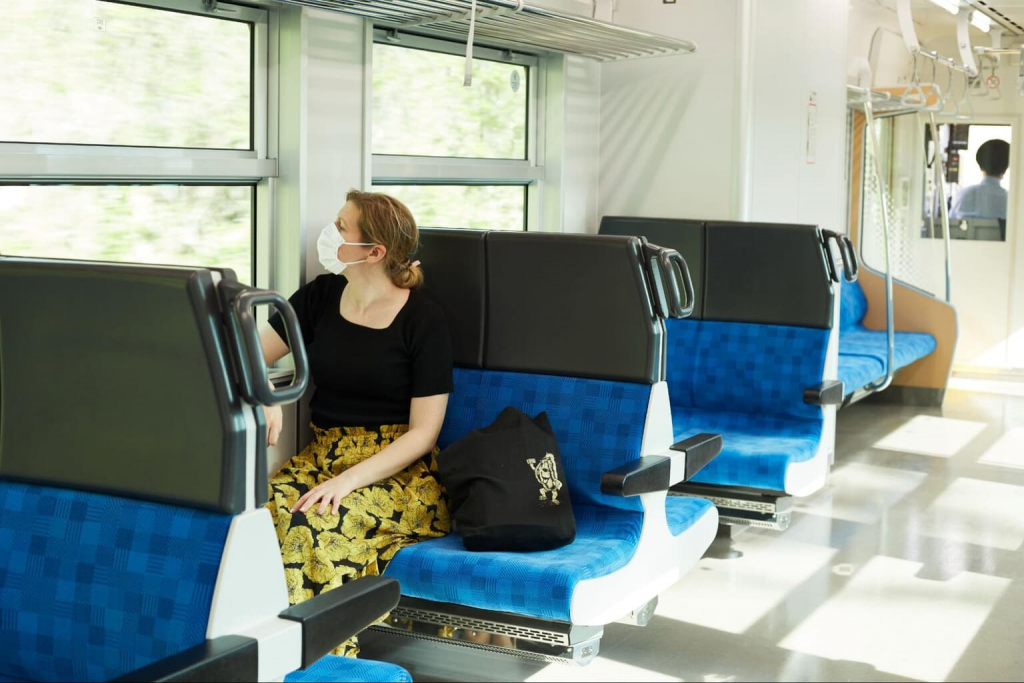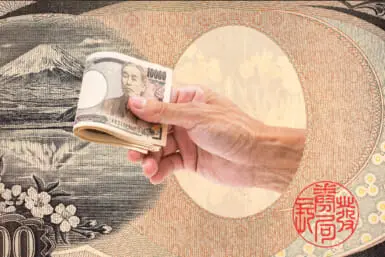Tohoku is a wonderful region with friendly people, delicious apples and some of the most beautiful coastline in Japan. We wanted to take the challenge to see how far our trip could go using only the JR EAST PASS (Tohoku area). The pass covers five consecutive days, and includes travel on any JR East-affiliated train or bus, even the extravagant Joyful trains. Joyful trains are all about the trip. One of our favorites is the Resort Shirakami, which runs between Aomori and Akita.
Here’s our five-day, four-night Tohoku itinerary using the JR EAST PASS. We’ve got onsen, an Ando-designed art museum, heart-shaped apple pies and even Namahage on the itinerary.

Day One: Tokyo to Hanamaki
Start at Tokyo Station and grab a bento before hopping on the streamlined Tohoku Shinkansen to Hanamaki in Iwate Prefecture. Riding on a bullet train is always a special experience.
Upon arrival, head straight to the hot springs. Hanamaki is known for its abundance of flowers and special rose baths, with many hot springs having a flower theme. For dinner, tackle the wanko soba challenge. Wanko soba is a special dish from Iwate, in which the waiter brings a succession of small bowls of soba. They will only stop when your stomach can’t handle any more noodles. How many bowls can you eat?

Day Two: Hanamaki to Akita
After a night of pampering, head from Hanamaki to Akita via the Akita Shinkansen. Drop your bags at your hotel and head over to the Akita Museum of Art or hop on the train across to Oga for a culture day.
The Akita Museum of Art, designed by architect Tadao Ando, is just as impressive on the outside as it is on the inside. The museum always has exciting exhibitions going on, often featuring Japanese artists. If weather and season permit, spend the afternoon checking out the Senshu Park, home to castle ruins and cherry blossoms.
For those looking to learn more about Akita culture, a visit to the region of Oga is a must. Only about one hour away by train from Akita Station, Oga is known for its Namahage, a demon-life being usually portrayed by men with traditional masks and straw garments. The Namahage New Years’ Eve Festival features several actors in Namahage costume parading around town, terrifying children and amusing their parents. The splendid Namahage Museum offers a chance to experience this iconic cultural event year-round.

Day Three: Akita to Hirosaki
Spend the morning aboard one of the Joyful trains on the Resort Shirakami Line from Akita Prefecture. The line stretches along the picturesque Sea of Japan coastline, stopping at stations of interest along the way. Resort Shirakami trains take a leisurely five hours to make the trip from Akita to the northernmost prefecture of Tohoku, Aomori.
There are three Resort Shirakami trains but the Buna train is our recommended ride. Buna passengers will be treated to traditional shamisen playing or puppet performance, depending on the day. You’ll even find a bar and shop onboard.
We suggest stopping for the night in Hirosaki, a city that produces around one-fifth of Japan’s apples. A visit to Hirosaki isn’t complete without tasting the city’s famous apple pie. The apples from Hirosaki are delicious and the locals will often open up their farms during the peak season to let punters try their hand at apple picking.
For fans of the harder stuff, Garutsu is a craft cider brand and bar based out of Hirosaki. They are known for their cider made from locally grown apples. At night we recommend the Daikancho area to soak up some local atmosphere at one of the market stalls or many restaurants.

Day Four: Hirosaki to Aomori
From Hirosaki, get back onto the Shinkansen and head for Aomori Station. Head to a city center apple pie shop such as Akai Ringo, which bakes apple pies in delightfully Instagrammable heart-shaped pastries.
To get the most out of your pass, you could even take the Mizuumi-Go JR bus ( from Aomori Station bound for Lake Towada. It’s a 180-minute journey, but the view is worth it. There are plenty of activities to engage in around the lake, including kayaking, hot spring hopping and cruises, though most visitors enjoy various walking paths around the shore. There are also restaurants where you can sample local catch such as red salmon (himemasu) and mountain-grown vegetables.
Travelers should note that the Mizuumi-Go JR bus doesn’t run in the winter, between mid-November and mid-April. When traveling to Lake Towada during that time, it’s recommended to rent a car upon arriving at Aomori Station.

Day Five: Hachinohe to Tokyo
Spend the night in Aomori before heading over to one last stop, Hachinohe. From Aomori Station, take the train to Shin-Aomori Station and switch to the Hokkaido Shinkansen bound for Hachinohe Station.
Once in Hachinohe, check out the local sights and smells of the bustling port city. Admire the views over the sea from an observation deck before grabbing a late lunch at one of the stalls at the famous Hasshoku Center seafood market (veggie options available).
Alternatively, sneak in an extra train ride and board the TOHOKU EMOTION train. This train is a bit of an ode to Tohoku craftsmanship, with an interior inspired by and featuring signature patterns and crafts from the region’s six prefectures. This train technically isn’t included in the JR EAST PASS but it’s worth the extra splurge to ride. For this one, you’ll also need to book your seats in advance.
Then, hop onto the bullet train for a direct journey back to Tokyo in less than 3 hours.

Whether it’s a solo trip, a romantic getaway, or a family adventure, traveling around Tohoku with an unlimited JR EAST PASS makes planning easier and hassle-free.
The JR EAST PASS (Tohoku area) costs ¥20,000 for adults and ¥10,000 for children for five days of unlimited travel on JR trains, including the Shinkansen. While this pass used to be only available for tourists visiting Japan, it is now also available for international residents. To get the pass, show your non-Japanese passport at the time of purchase.
It’s advised to reserve seats on bullet trains before traveling. As the Joyful train schedule is variable, pre-booking is recommended to ensure the train is running on the day you hope to visit.
Learn more about the JR EAST PASS (Tohoku area) here.
Top and feature image by Ryoko Ogawa
Sponsored Post









